The food that you feed your dog has an immense effect on the dog’s life span. You should be aware of the correct feeding habit for your dog. Having a pet dog is not only about fun. It also brings great responsibility along with it.
Among those responsibilities, one of the important ones is the looking after of your dog’s proper growth and health. How will you do that? Well, you just have to know when to switch from puppy food to dog food for Labrador.

When To Switch From Puppy Food To Dog Food For Labrador – A Complete Guide
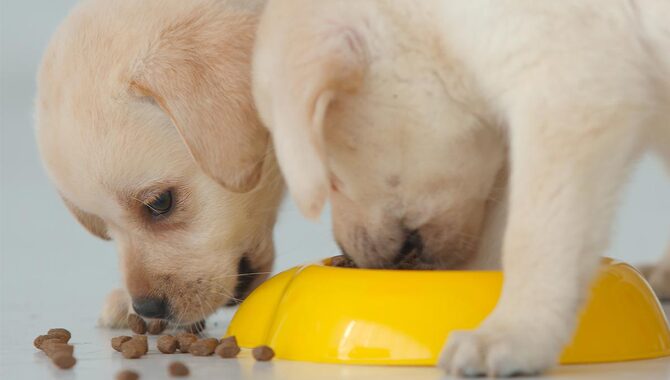
The switching from puppy to dog food is termed as the really crucial transition state. Being able to switch your dog’s food is complex and needs to be done gradually over time.
If You Attempt To Do It All At Once, Then Your Dog Might Face Digestive Problems
How to do it? Well, you might want to mix the puppy food and dog food in a fixed ratio at first. To start with, you have to give your Labrador half a cup of adult dog food and a full cup of puppy food. Not more than half a cup per day at the very beginning.
Then, you might want to increase in on the 7th day to one cup of adult dog food and half a cup of puppy food. After your dog has coped up with the new diet, you can completely cut off the puppy food and switch to adult dog food. To make it easier for you to get, let us simplify what we just mentioned.
On day 1, give the food in a 75% puppy food ratio and 25% dog food. After that, make it 50-50 of them both. Succeeding in this attempt, change the percentage from 25% puppy food to 75% adult dog food. In the last stage, your Labrador should be served 100% of adult food daily.
What To Consider To Determine The Switching Time?
Breed
The type of nutrient your dog requires depends upon the breed of your dog. Unlike smaller breeds, larger breeds require a particular amount of minerals and nutrients to grow properly.
They need the exact amount of every component for the correct formation of their muscles and bones. Therefore, your large Labrador needs more attention to its food intake. Making the transition from puppy to dog food is very important.
Maturity And Weight
We can interlink maturity and weight to one another for dogs. The weight and maturity both depend upon the breed of the dog as well.
You see, larger breeds like the Labrador are matured enough for this transition of food when they are about 1 year to 18 months old.
Unlike them, smaller breeds require almost 1 year to adapt to this transition. When it comes to weight, when your Labrador is about 50-plus pounds, you should be able to get started with the transition. Some people begin to feed their Labradors adult dog food at the age of just 6 months, which is not ideal for starting the transition. Wait for a year at least for its total growth in height and maturity.
Also, larger breeds like your Labrador are approximately at the weight of 80-plus pounds when they are matured. Seeing your dog’s body structure and size can help you choose the perfect time for the switch. If you are not sure about your decision to go for this transition, why not visit your local vet to know more about its diet and the nutrition required!
Difference Between Puppy And Adult Dog Food
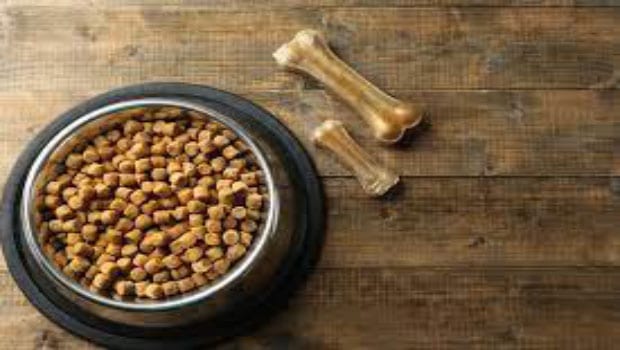
Now, let’s talk about the type of food we are talking about. It’s not much of a mystery that puppy food is for puppies. To be more specific, puppy food contains all the essential nutrients for the dog’s growth at an early age. They have the right amount of calories for your puppy, unlike the treats you occasionally give them, which doesn’t help much in your puppy’s growth. Puppy food can either be wet or dry.
On the other hand, adult dog food is essential for the perfect formation of the structure of your dog. As we know, proteins are the body’s building blocks, and most of them are present in adult dog food.
So, adult food offers a protein-rich diet. But, know that too much protein can cause abnormal growth of bones in your dog’s body.
When it comes to Labradors, they are vulnerable to the problem of overweight. But, there’s nothing to worry about as adult food provides lower calories so that your dog can eat without getting fat. Moreover, the food products are formulated especially for the larger breeds like Labradors so that their joint and bone formation is always on track. What more can you expect from dog food?
How Long to Feed Puppy Food & Switching to Adult Dog Food
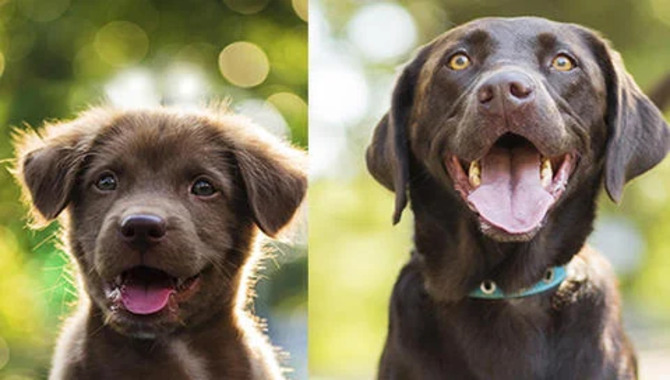
Dogs are the perfect pet, with the only downside being the financial and time commitment needed to care for them. Luckily, there are tons of ways to save money on your pup. Here are some tips:
- It’s never too soon to start looking at inexpensive dog foods for adult dogs.
- It’s best to switch your Puppy as soon as they eat dry food.
- You don’t want your dog eating puppy food for their entire life.
- Before you decide on expensive dog food, compare it to cheaper alternatives.
- There are many ways to find cheap dog food, including buying online, using coupons, and using rebate apps.
- You could also consider switching to natural foods, like fruits and vegetables.
Choosing The Best Brand’s Food To Feed My Labrador
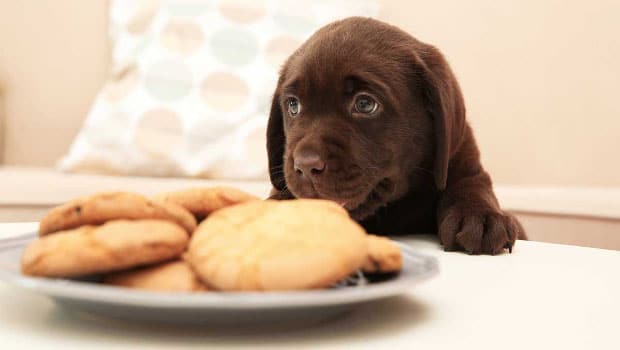
When feeding your dogs, you have to be very specific about the nutrient and calories intake per day. Seeing the labels on products to make sure about the energy content is a great idea to start with. If you need more assurance, then why not ask your vet for a diet chart and let him suggest you a specific brand!
However, keep in mind that your Labrador is almost like your child, so you have to feed him good quality adult food. Dog foods from reliable brands might be a bit expensive, but don’t tighten your budget just to save some bucks.
How Much Food To Give To Your Labrador?
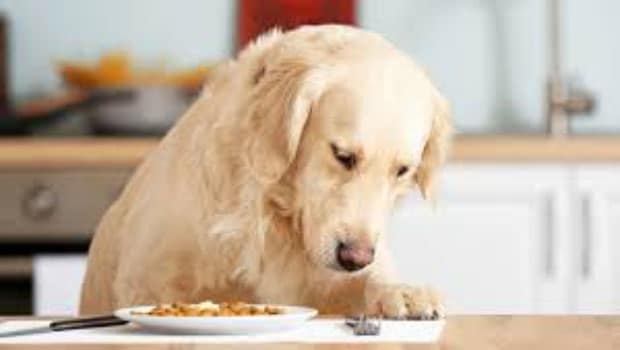
It actually depends upon the nutrients chart at the back of the pack of adult food you are feeding your dog. According to daily intake requirements, you will have to provide your dog with a fixed amount. An adult Labrador weighing around 80 lbs. might need 4 cups of adult dog food per day.
Teach The Drop It Command To Any Dog
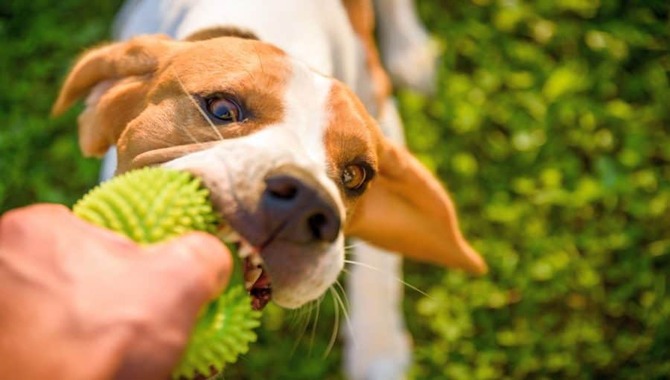
If you want to teach your dog the drop it command, you can start by teaching them the drop command. You do this by holding a treat in your hand and then asking your dog to “sit.” Once they have done so, put one of their paws on top of the joy and give them a small piece of cheese as they let go of it with their mouth.
Meal times are another time they will be doing something similar, and this is also a good opportunity for “drop it” training. You can also use this command if your dog is carrying something that it shouldn’t be, or it could be a good idea to teach them this command if you have an aggressive dog that bites or nips at people.
Dog Front Paw Curled Under When Lying Down
The dog’s front paw will curl under and lie on its side in the ” lay-on ” behavior. This position protects vulnerable areas from being crushed by the body. To relieve stress, dogs will often lick their paws or quietly pant. If a dog is afraid of impending danger or has received injections, the tail may be tucked between its legs to prevent possible self-injury.
When dogs lie down, they often rest their head on their forelimbs and tuck their chin beneath them. This has been said to resemble the look of an older man resting his head in his hands. This may have become a common position for dogs while resting because it is common in many children who are lying down and playing. When dogs sleep, they usually put their head on their paws, making a pillow.
How To Know That It’s Not The Time For Switching?
The answer is simple- observe your dog. It might seem to you that your Labrador is coping up just fine with the new diet by seeing the empty bowl. But, that sometimes might turn out to be misleading.
So, it’s better to keep an eye on your furry buddy. If his body looks weak or he isn’t as playful as before, then you might want to change the brand or delay the transition or visit your vet. Switching at the wrong time might be indicated by problems in the dog’s digestion or a change in stool which seems unhealthy.
Traits That Indicate That Your Timing Was Right
There are a few traits that you might observe in your dog to know that everything is doing going great with the diet. Among these are excellent muscle construction, shiny, healthy skin, clean teeth, bright eyes, and tiny wooden stools. If you are feeding your Labrador right, these are some of the traits you will surely see
Yet, this might not be the case sometimes, as other properties can also affect these characteristics in a healthy dog. So, when things don’t work out, even after going with a good brand and proper timing, don’t panic and just go to the vet.
Final Words
After going through the list of things, you need to keep an eye on determining when to switch from puppy food to dog food for Labrador. For a healthy life span for your Labrador, you must do your part of the tasks by looking after its eating habits. Owning a pet might be stressful sometimes, but going on the right track will never let any sadness come between your big Labrador and the heart-warming times.
FAQs
[rank_math_rich_snippet id=”s-52abf1b5-cbd7-4c74-9f81-9e2e7c8bfcaa”]